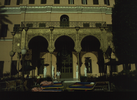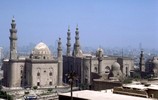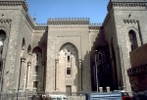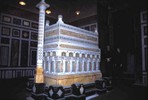Previous Lecture | Next Lecture
Concepts
Historical Background: The nineteenth century started with the first European military interventions in the Orient and ended with most of it under direct colonial rule. First was the infiltration of India and the establishment of British colonial rule in 1857. Second was the Expedition of Bonaparte to Egypt in 1789-1801, which affected the culture of the region. Third was the occupation of Algeria in 1831. By the beginning of the twentieth century, the Ottoman Empire, which was considered Europe's "sick man", collapsed, and in the 1920's most of its provinces were placed under European mandates. Architecture, like all other institutionalized disciplines, was affected by these new political realities. Not only were European styles invading the cities of the Orient and shaping their outlook and the tastes of their inhabitants, but also European and European-trained designers became the masters of the building trades everywhere. They acted as the interpreters of the architectural heritage of the countries in which they worked. Consequently, hybrid styles were produced that borrowed freely from the varied repertoires of non-Western architectures, and blended them with various European structural, constructional, functional, and stylistic inventions.
Isma`il Pasha: (r. 1865-79) Muhammad `Ali's grandson and possibly the most ambitious, most "progress"-minded, and most Europeanized of the dynasty. He visited the Paris Exposition Universelle in 1867 and was fascinated by the bold plan of Baron Haussmann which transformed the city. Upon his return, he took up the plan started by his grandfather, and following the example of Paris, he "Haussmannized" Cairo. He was the first to acquire the title Khedive from the Ottoman sultan, and during his reign the Suez Canal was completed in 1869. Cairo underwent a facelift for the occasion of the canal's inauguration that drastically altered its appearance and future development.
`Ali Mubarak: (1823-93) A French-trained engineer, he was one of the most influential officials in the government of Isma`il, responsible for many modernizing projects in Cairo. He compiled a 20-volume book, al- Khitat al-Tawfiqiyya al-Jadida , in which he updated Maqrizi's Khitat and added sections on the development of Cairo between the fifteenth and the nineteenth century.
The Gazira Palace, Zamalek Island: (1864) Built by the Khedive Isma`il and designed by the Austrian architect Franz Bey. The most impressive details of the palace are the cast-iron slender porticoes made in Germany and reassembled on site. The selamlik of the palace was used as the residence of the empress Eugenie of France during the inauguration of the Suez Canal.
The Palace of `Abdin: (1863-74) Originally built by the Khedive Isma`il as the new dynastic center after he left the Citadel, the palace was renovated several times and its actual facade is totally neo-classical in style. Ceremonial halls in it are fascinating exercise in eclectic, bombastic styles. The most impressive among them are the Byzantine Hall and the Mamluk Hall.
The Mosque of al-Rifa`i: Begun in 1869 by order of Khochiar, the mother of Khedive Isma`il, and designed in a neo-Mamluk style by an Egyptian architect, Hussein Fahmi. The mosque was left unfinished until 1906 when the Austrian Max Herz Bey, the famous restorer of Islamic monuments in Cairo, was commissioned to complete it. It stands opposite the grand mosque of Sultan Hasan as an attempt of the Khedival family to measure up to the achievements of the Mamluk sultans of Egypt.
Monuments







